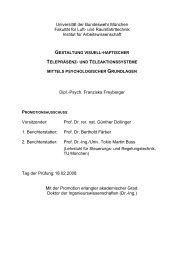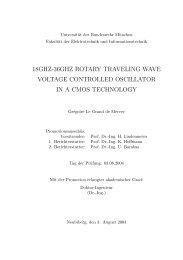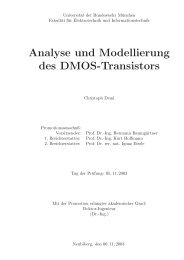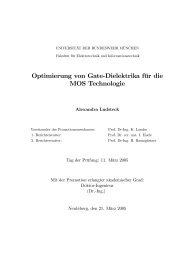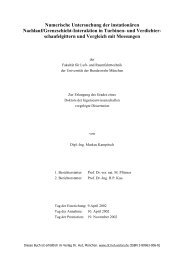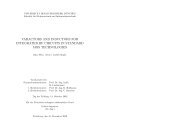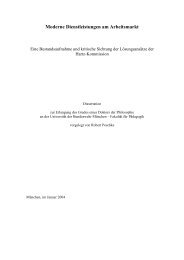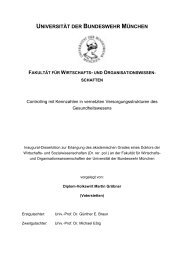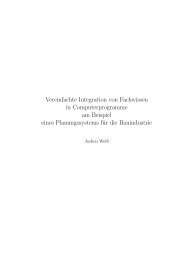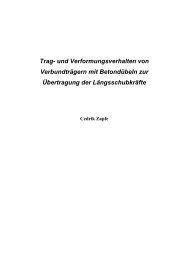Precise Orbit Determination of Global Navigation Satellite System of ...
Precise Orbit Determination of Global Navigation Satellite System of ...
Precise Orbit Determination of Global Navigation Satellite System of ...
You also want an ePaper? Increase the reach of your titles
YUMPU automatically turns print PDFs into web optimized ePapers that Google loves.
Chapter 7 <strong>Orbit</strong> <strong>Determination</strong> Using Carrier Phase Observation<br />
order to use carrier phase observation for GEO satellite orbit determination, other independent methods such as<br />
CCD camera and SLR could be used in data preprocessing. Using these techniques, the precise distance between<br />
satellite and tracking station is obtained and the initial ambiguities <strong>of</strong> carrier phase observations can be<br />
computed. Because the tracking stations for orbit determination are located in the open area, the locked signals in<br />
the tracking stations will not be easily interrupted. Therefore initial ambiguities will not be easily changed.<br />
7.3 Ambiguity Resolution Approaches<br />
There are many ambiguity resolution approaches for GPS. Some typical methods may also be suitable for<br />
GNSS-2/Galileo orbit determination when using carrier phase measurements.<br />
Following Teunissen (1994), the ambiguity approach can be described as follows.<br />
The carrier phase measurement can be represented as<br />
ϖ ϖ<br />
Φ= r − R + c( dt− dT) + λN + ε (7-15)<br />
where<br />
ϖ<br />
r unknown receiver antenna position vector at signal reception time<br />
ϖ<br />
R given satellite antenna position vector at signal transmission time<br />
c speed <strong>of</strong> light in vacuum<br />
cdt receiver clock range <strong>of</strong>fset<br />
cdT satellite clock range <strong>of</strong>fset<br />
λ carrier wavelength <strong>of</strong> the signal<br />
N carrier phase ambiguity<br />
The term ε represents carrier phase measurement noise and biases such as satellite ephemeris errors, tropospheric<br />
and ionospheric delays, and ranging errors caused by multipath effects. In the processing <strong>of</strong> carrier phase data it<br />
is common to differentiate the carrier phase measurements between satellites and between receivers to eliminate<br />
some common errors. This gives the single and double differenced carrier phase observation equations<br />
∇Φ = ∇ r− R + c∇ dt+ λ∇ N+<br />
∇ε<br />
(7-16)<br />
∆∇Φ = ∆∇ r− R + λ∆∇N+ ∆∇ε<br />
(7-17)<br />
∇ and ∆∇ stand for the single and double difference operator. In the following discussion a two-receiver<br />
situation is assumed. The term ∇dt then denotes the single differenced clock error between the reference<br />
receiver and the remote receiver. Because <strong>of</strong> double differencing this error vanishes in Eq.(7-17). In both<br />
equations the ambiguity-terms ∇N and ∆∇N are known to be integers.<br />
Linearization <strong>of</strong> the observation equations with respect to the unknown parameters and a collection <strong>of</strong> these<br />
linearized equations into a linear system <strong>of</strong> equations gives:<br />
ϖ ϖ ϖ ϖ<br />
y = Aa+ Bb +ε (7-18)<br />
ϖ ϖ ϖ<br />
with E{} ε = 0,<br />
D{} ε = D{} y = Qy where<br />
ϖ<br />
y vector <strong>of</strong> observed minus computed differenced carrier phase observations<br />
ϖ<br />
a vector <strong>of</strong> unknown ambiguities<br />
ϖ<br />
b vector <strong>of</strong> unknown coordinates <strong>of</strong> baseline or satellite position, velocity and related<br />
dynamic parameters<br />
A,B design matrices for unknown ambiguities and parameters<br />
ϖ<br />
ε vector <strong>of</strong> unmodeled errors (in the following ϖ Qy<br />
ε is sufficiently small to be neglected)<br />
variance-covariance matrix <strong>of</strong> the observations ϖ y<br />
E{.} expectation operator<br />
D{.} dispersion operator<br />
Because ϖ a should be integers, it can be shown, that Eq. (7-18) may be solved in three steps. Firstly, estimating a<br />
double difference float solution (real-valued ambiguities ϖ ϖ<br />
a ∃ ∃b<br />
with ), i.e.<br />
ϖ ϖ ϖ 2<br />
min y− Aa−Bb with<br />
ab ,<br />
Qy<br />
ϖ ϖ<br />
ab R n<br />
, ∈ (7-19)<br />
90



